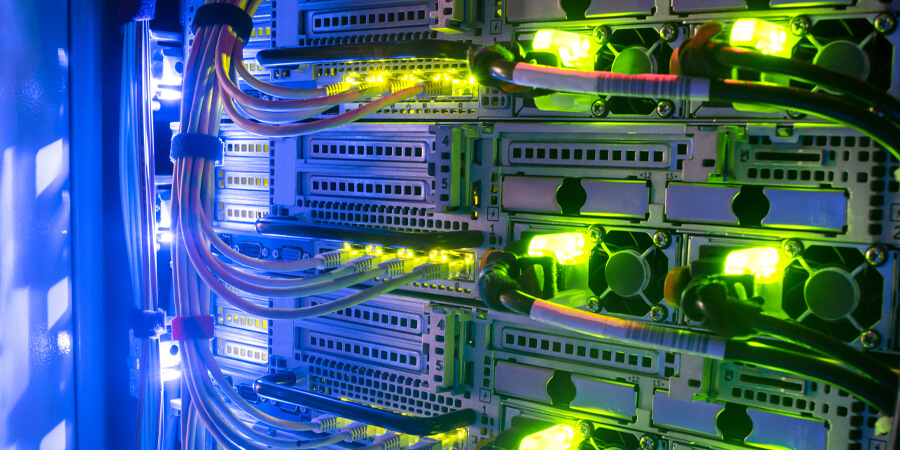The data center interconnect market is estimated to grow from US$8.32 billion in 2022 to US$28.34 billion by 2032.
With the North America region accounting for the largest market size during the forecast period, the data center interconnect market is expanding due to the ease of configuration, which leads to seamless integration in automation services. Many organizations have also been investing in edge computing to interconnect their data centers.
As a result, smaller, more modular data centers are deployed to deliver increased diversity and reduced latency located closer to data consumers.
Furthermore, data centers are not standalone entities; they depend on local, regional, and occasionally submarine high-speed optical connections to interconnect with other data centers, as well as the individuals and applications that make use of their computing and storage capacities.
To define, data center interconnect (DCI) technology connects two or more data centers together over short, medium or long distances using high-speed packet-optical connectivity.
Hence, from Tim Doiron's perspective, who serves as the Vice President of Solutions Marketing at Infinera, the data center interconnect solutions within the industry can advance and adjust in three key ways: by offering more compact modular optical platform options, introducing innovations in embedded and pluggable coherent optical engines and expanding the transmission spectrum for each fiber pair.
“In short, we need to right-size initial DCI capacity and investment to match the data center’s day-one transmission demands while also enabling cost- and energy-efficient expansion over time,” said Doiron.
For instance, chassis come in various depths to accommodate deployment in a variety of settings. These systems have the capability to combine optical line system and transponder functions and can be expanded through multi-chassis connectivity, allowing for streamlined management of individual network elements and effortless capacity expansion.
“This pay-as-you-grow model enables operators to expand only when needed, matching cost and power consumption to capacity,” noted Doiron.
Modern embedded engines, such as Infinera's ICE6, achieve 800 Gb/s per wavelength over distances nearing 1,000 km. These very engines can also provide 600 Gb/s over spans of up to 3,000 km and 400 Gb/s over virtually any part of the globe, even encompassing submarine routes spanning up to 10,000 km.
These are known to be the most effective transport technology for DCI. “But 1.2 Tb/s-per-wavelength engines and beyond are emerging from development labs and will be ideal for long-distance DCI connectivity solutions,” pointed out Doiron.
Embedded engines prove advantageous in scenarios with limited fiber resources and a need for high spectral efficiency. As an example, when a data center operator leases fiber, embedded optical engines can reduce operational expenses by optimizing data transmission over a single fiber pair, obviating the need for leasing an additional pair or trenching new fiber. Moreover, the power efficiency of contemporary 800G coherent optical engines has substantially improved, consuming 89% less power per bit compared to engines of a similar kind a decade ago.
Connecting Data for Tomorrow: The Role of Optical Interconnects
Without a doubt, DCI technology sits at the center of the cloud-centric world, providing the network capacity for users and applications to connect to storage, compute and content resources.
Notably, the rise of AI, with its appetite for data processing and analytics, is driving an urgent need for cutting-edge optical interconnects in data centers. These interconnects are critical for delivering the massive data bandwidth and low-latency communication required to power AI workloads, making DCI innovation even more paramount.
From ensuring low latency for real-time applications to addressing scalability, energy efficiency and security concerns, DCI innovation, particularly in optical technologies, is the cornerstone for enabling the interconnected world of tomorrow. To thrive in this data-driven landscape, businesses and technology stakeholders must invest in forward-looking, sustainable and agile solutions that bridge data centers efficiently.
In conclusion, the relentless pace of technological advancements, the exponential growth of data and the ever-expanding array of digital applications and services in today's modern era necessitate a resounding call for innovation in data center interconnect (DCI).










